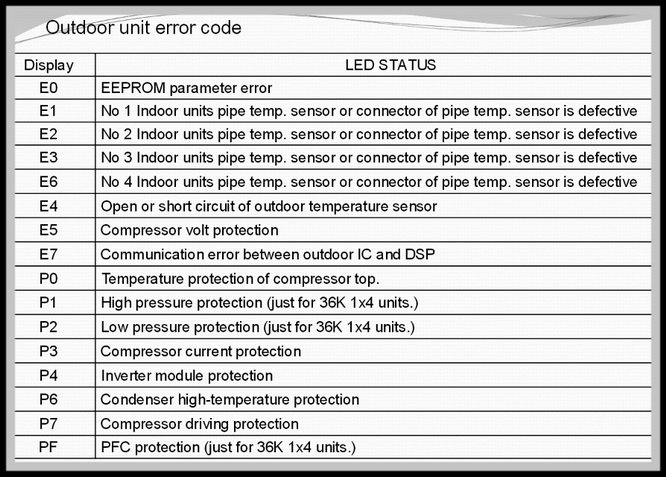
Let’s break it down. The F1 error code on your Midea air conditioner isn’t some cryptic message just for the tech experts out there. No, it’s a straightforward signal that something’s up with your unit—it’s having trouble sensing the room temperature. Imagine trying to bake a cake without knowing the oven’s temperature; it’s a bit like that. The air conditioner relies on accurate temperature readings to decide when to cool things down or take a break. So, when this code appears, it means the temperature sensor might have gone a bit haywire.
Understanding the F1 Error Code
So, what’s really going on when you see that F1 code? Think of your air conditioner’s temperature sensor as its “eyes” in the room. It gauges how hot or cold it is and tells the rest of the unit how to adjust accordingly. When the F1 error pops up, it’s essentially saying, “Hey, I can’t see the room’s temperature too well!” This might be due to a faulty sensor, a loose connection, or even just a bit of dust or dirt clogging things up.
It’s important to realize that this error doesn’t mean your whole unit is busted. Picture your car again—when the gas light flashes, it doesn’t mean the car’s engine has blown. It just needs a little TLC. Similarly, your Midea air conditioner is indicating that it needs a bit of attention to see clearly and function properly.
Usually, the first step in resolving this dilemma is to see if the sensor is clean and properly connected. Sometimes, opening the unit and gently cleaning the sensor, ensuring it’s snug in its connector socket, does wonders. However, if that doesn’t fix the issue, the sensor might need a reset or even a replacement.
Possible Causes of the F1 Error Code
Now that you know what the F1 code stands for, let’s delve into why your air conditioner might be throwing this code. One major culprit could be a loose or faulty temperature sensor. Just like a loose battery connection in a remote control can mess with its functionality, a sensor that’s not properly connected can give inaccurate readings.
Another possibility is grime and debris buildup. Imagine trying to see through a dirty windshield; it’s sort of the same with your air conditioner’s sensor. When dust clogs up the sensor, it can’t accurately read the room temperature, leading to the F1 error code.
Finally, in some cases, the whole circuit board might be the issue. It’s like when there’s a glitch in your phone that only a reboot or repair can fix. If the sensor and its connections seem fine, the problem might lie deeper in the unit’s electronics.
Steps to Fix the F1 Error Code
Let’s get hands-on and tackle this issue step by step. First, make sure to turn off and unplug your air conditioner. Safety first! Then, open up the front panel. Most units allow easy access to the sensor area. Once open, check if the sensor is properly connected.
If everything is connected but the problem persists, gently clean the sensor with a soft cloth to remove any dust or debris. A clean sensor is like a clean pair of glasses—it helps the machine see better. After cleaning, plug the unit back in and turn it on to see if the error has resolved.
If you’re still seeing the F1 error, it might be time for a new sensor. Don’t hesitate to reach out to a professional. They can provide a diagnostic service and replace faulty components, ensuring your air conditioner is back to its cooling best.
Preventative Tips to Avoid Future Errors
After you’ve battled the F1 error and won, here’s how you can keep it from cropping up again. First, regular maintenance is key. Just like you wouldn’t let your car go years without an oil change, make sure to schedule regular cleanings and check-ups for your air conditioner.
Second, consider where you place your unit. Avoid areas with heavy dust or direct sunlight. Think of it like planting a seed; you want to give it the best spot to grow. Similarly, your unit will function best in a clean, unobstructed space.
Lastly, keep an eye on how your air conditioner is working. If it’s making strange noises or it’s not cooling as effectively, don’t ignore it. Treat it like a friend telling you they’re feeling under the weather. Check in, and if that doesn’t solve the issue, call in the experts.
In conclusion, while the F1 error code may seem intimidating at first, a little understanding and a few simple steps can set things right. Consider this an opportunity to get to know your Midea air conditioner better and keep it running smoothly for years to come.